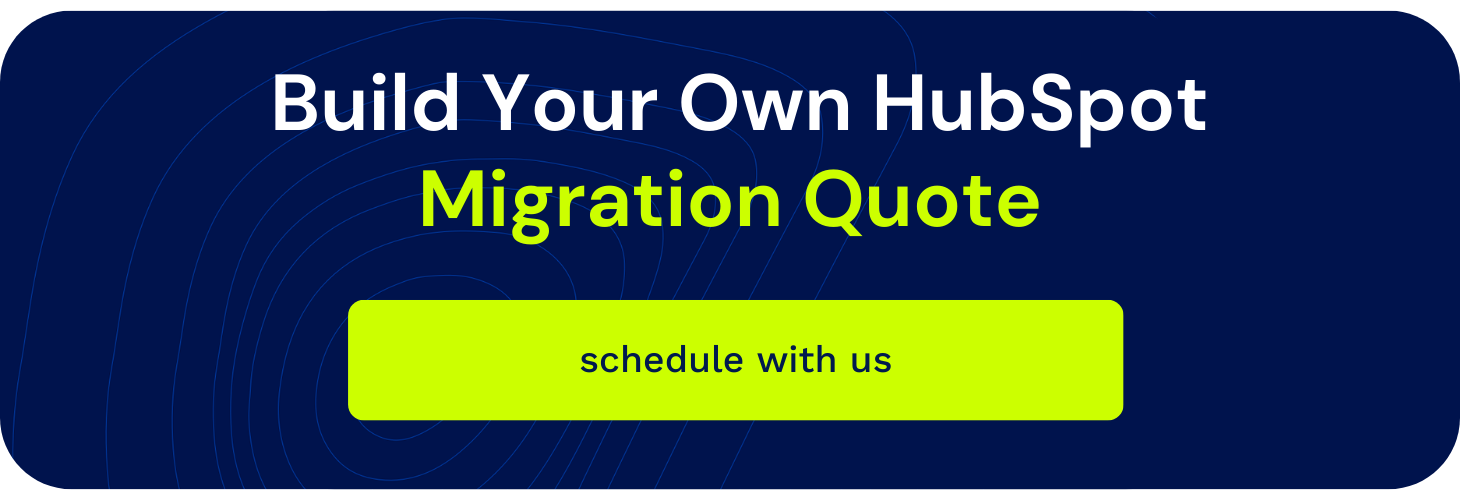%20(54).png?length=320&name=_Blog%20Covers%20ENG%20(NAM)%20(54).png)
Deciding to move from one marketing automation system to another is a hefty task. But, depending on your needs and business, making the switch may be more efficient in the long run. If you're currently using Pardot's platform and are wondering if HubSpot could be a better fit, consider the following differences to see if they benefit you. We also have a helpful guide on how to start planning your potential migration timeline if you decide to move forward with migrating to HubSpot.
User Interface
HubSpot has experienced fast growth over the last several years and with good reason: it's incredibly user-friendly and intuitive. Barring a few advanced customizations, there really isn't a need for developers or coders (although you're able to upload your own CSS if you so desire). HubSpot has easy-to-use tools such as a drag-and-drop email builder, step-by-step email automation triggers, contact scoring assignments, and more to make sure that customer relationship management stays simple. On the other hand, Pardot's layout is more complex due to the sheer number of options presented and requires a larger learning curve to master. If you are confident in your technological know-how, then this shouldn't be an issue. Think in advance however of who else will be involved regularly in the platform and if it needs to be approachable for the larger majority.
Price Point
HubSpot is easily more accessible price-wise to smaller and mid-size businesses. HubSpot offers a fantastic free customer relationship management (CRM) database that stores unlimited contacts, which never expires. In addition, HubSpot provides a 14-day free trial to test the features of their paid plans, as opposed to Pardot. The starting Growth Plan through HubSpot that combines the various Hubs (Marketing, Sales, and Service Hubs) begins at $50/month at the writing of this article - please see their pricing page for the most accurate information. Growth Plans then escalate through the Professional Growth Suite and Enterprise Growth Suite, which starts at $4,200/month. On the other hand, the most basic plan at Pardot is their Growth Plan beginning at $1,250/month. The plans then increase through the Plus, Advanced, and Premium options, which end at a $15,000/month bill.
Right off the bat, you can see how pricing might be a barrier for a company to use Pardot. But even more than that, to get the right functionality you're seeking, Pardot may require paying for more add-on services. HubSpot's ease of use and integrated features (which we'll cover next) make it an all-in-one solution. Regardless of a company's size, there is a solution that would meet their needs. The main factors in determining which plan to choose would be the levels of customization, contact list size, and reporting that are desired.
Features
There's a range of features offered in HubSpot that set it apart from Pardot ranging from media management to CRM.

Creating and finding image assets in HubSpot is lightning fast thanks to their integration with Shutterstock and Canva. Shutterstock, a leading stock image provider, partners with HubSpot and gives you access to thousands of free images. If you prefer designing your own graphics using Canva, you're also able to import our creations directly into HubSpot. Being able to host your video content internally in HubSpot provides you several advantages over Pardot. First off, you're not paying for another video hosting service like Vimeo or VidYard. Technically you could host videos on YouTube for free, however, in that scenario you're sacrificing your brand's purity since ads and irrelevant "suggested-watch" videos interrupt the experience of your content. Second, you don't have to spend time opening a separate platform, finding and copying the embed code of the video you want, and inserting it into your page. Embedding videos directly from HubSpot greatly diminishes the time spent on this process.
Both HubSpot and Pardot are integrated with social media, however, HubSpot offers the ability to schedule out Instagram posts which is unavailable in Pardot. In regards to online advertising, Pardot lacks online ad management as well unless you integrate it with Google AdWords or purchase their Advertising Studio service. HubSpot can integrate with Google Search Console for SEO insights while Pardot cannot. Moreover, HubSpot has its CRM built internally while Pardot needs to sync with Salesforce or a third-party CRM to access lists of contacts. Although the sync isn't a deal breaker, it's an added step that takes time and attention unnecessarily.
In our estimation, HubSpot provides more advantages over Pardot as your data management system. Don't just take our word for it though. See the results comparing HubSpot to Pardot from thousands of reviews on G2's website, the largest marketplace for business to find and review technology. The comparison between the two provides several insights into HubSpot's benefits. If you have questions on how to migrate your business to HubSpot, click the button below to build your own quote and request a consultation.

